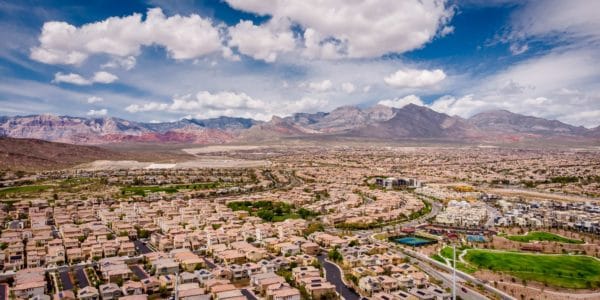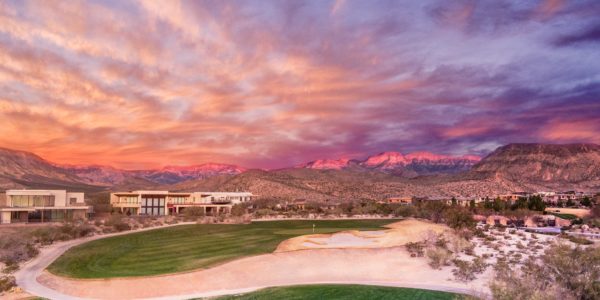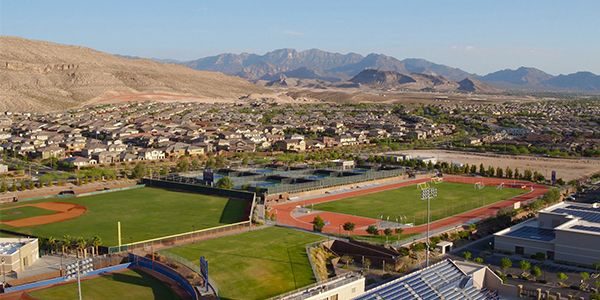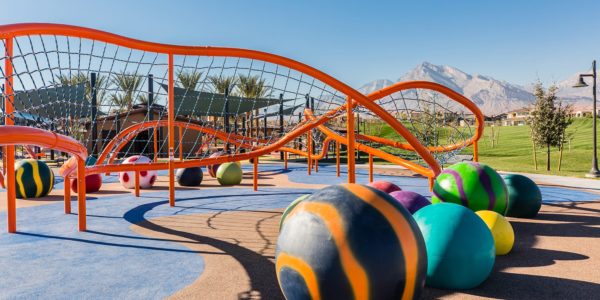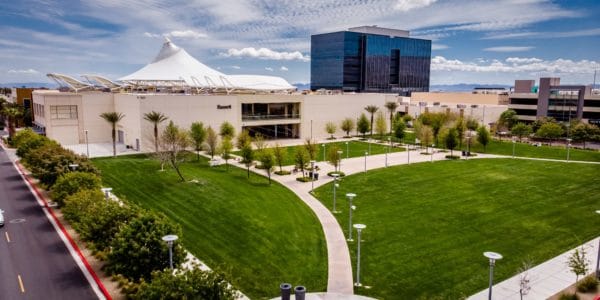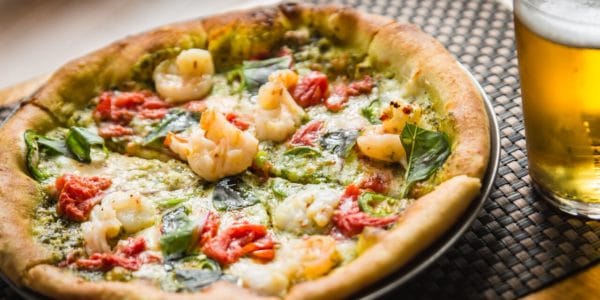The master planned community of Summerlin®, totaling 35 square miles and stretching for 15 miles along the western edge of the Las Vegas Valley, is known for spectacular views given its higher elevation and geographic position.
To the east, Summerlin offers many vantage points and vistas of the valley, including the Las Vegas Strip. To the west, the community’s proximity to Red Rock Canyon National Conservation Area and other mountain ranges gives Summerlin residents inspiring views of many of the valley’s most spectacular peaks, particularly at sunset when the golden hour makes the area’s majestic mountains glow.
Starting at the southernmost point of the community near Cowabunga Canyon and Bishop Gorman High School, peaks from the Bird Spring and Spring Mountain Ranges are visible – from Mt. Potosi and spanning north to Blue Diamond Hill, among others.
Six miles north following the Spring Mountain Range to the west and from Downtown Summerlin, many mountain peaks are up close and personal, including Mount Wilson, Bridge Mountain and Rainbow Peak, all of which share the backdrop of Red Rock Canyon National Conservation Area.
Continuing the journey north from Downtown Summerlin along the 215 Beltway to Summerlin Parkway to the community’s northernmost regions, the Spring Mountain Range meets the La Madre Range and offers panoramas of mountain peaks synonymous with the Las Vegas Valley, including La Madre Peak, Griffith Peak, and in the distance, the iconic Mt. Charleston.
Summerlin, which sits at the base of Red Rock Canyon National Conservation Area at an average of 3,500 feet above sea level, boasts parts of the community that top out above 4,000 feet. The community’s elevation delivers two proven advantages: cooler temperatures and an abundance of stunning vistas that offer sweeping views of the valley from many locations.
According to Julie Cleaver, Senior Vice President, Commercial and Residential Planning for Summerlin, the community’s higher elevation is obvious when looking east at the valley’s expansive views from Summerlin Parkway.
“Summerlin was developed and designed to work in harmony with the area’s naturally elevated setting,” said Cleaver. “Summerlin’s elevation is so much higher than the rest of the valley, spectacular viewsheds can be found throughout the community, even in lower lying areas. The land on which Summerlin sits is naturally beautiful, and its higher elevation is just one more point of distinction.”
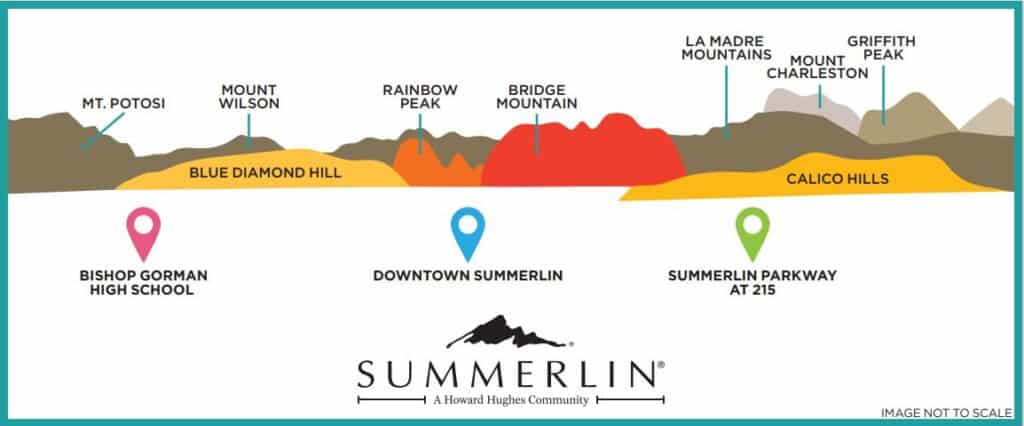
Now in its 33rd year of development, Summerlin offers more amenities than any other Southern Nevada community, including 300-plus parks of all sizes; 200-plus miles of interconnected trails; resident-exclusive community centers; ten golf courses; 26 public, private and charter schools; a public library and performing arts center; Summerlin Hospital Medical Center; houses of worship representing a dozen different faiths; office parks; neighborhood shopping centers; and, of course, Downtown Summerlin®, offering fashion, dining, entertainment, Red Rock Resort, Class-A office buildings, City National Arena, home of the Vegas Golden Knights National Hockey League practice facility, and Las Vegas Ballpark®, a world-class Triple-A baseball stadium.
In total, Summerlin currently offers nearly 100 floorplans in almost 20 neighborhoods throughout seven distinct villages and districts. Homes, built by many of the nation’s top homebuilders, are available in a variety of styles – from single-family homes to townhomes, priced from the $400,000s to more than $1 million. For information on all actively selling neighborhoods, visit Summerlin.com. Before you visit any new Summerlin neighborhood, please call the homebuilder to check on hours of operation. Phone numbers for each neighborhood are on Summerlin.com.

